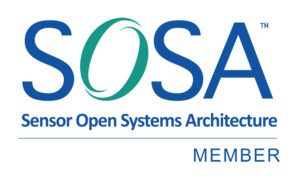LCR and the SOSA Open Standards Initiatives
As SOSA consortium members and as suppliers to the defense industry, we follow closely the evolution of the SOSA directives and we develop products in step with the latest advancements to the standard in order to meet the expectations of our customers.
LCR manufactures chassis, backplanes and integrated systems that support OpenVPX modules and modules in alignment with the SOSA Technical Standard.
What is SOSA?
SOSA, or Sensor Open Systems Architecture is an emerging open system standard intended for signals intelligence, radar, communications, electronic warfare and other sensor processing defense applications. It is a refinement of the COTS OpenVPX (VITA 65) standard that improves interoperability and enables multi-vendor choice and compatibility among plug-in-cards in 3U and 6U VPX architecture systems. The goals of the SOSA Technical Standard include:
- Reduced development cycle time and cost
- Reduced integration time
- Increased vendor choice
- Reduced sustainment and modernization cost
- Support capability evolution and mitigate obsolescence
- Enable technology transition
LCR Chassis Design and the SOSA Initiative
All LCR chassis accept modules in alignment with the SOSA Technical Standard. This includes all modules and their associated profiles as defined by VPX, OpenVPX and SOSA
The SOSA initiative has had to date, little impact on chassis design:
- The same construction, materials, cooling methods, sizes and design methods that apply to chassis for VPX and OpenVPX module content, apply to chassis with SOSA content.
- With the exception of emerging external 38999 connector pinout requirements and potential future chassis size standards, chassis design remains agnostic with regard to SOSA.
- Chassis can in fact accommodate a mixed OpenVPX / SOSA aligned integrated system of modules.
LCR Backplane Design and the SOSA Initiative
LCR’s backplane capabilities include designing, testing and manufacturing backplanes that support new and emerging SOSA aligned modules and their corresponding profiles.
- The vast majority of work in the SOSA community has revolved around module profiles, their corresponding slot profiles and the backplane connectivity (backplane profiles) that accommodate the new profiles.
- The methods used to layout and manufacture backplanes for SOSA aligned modules are the same as those used for OpenVPX modules.
- For 25Gb per lane data rates in SOSA, the module and backplane connectors are enhanced to ensure slot to slot signal integrity at the higher rates.
- For optical and RF I/O now available in SOSA aligned modules, backplane designs must include slot profiles with apertures or openings to accommodate the corresponding RF and optical connectors that mate with the module connectors.
The new 25Gb per lane data rates (supporting 100Gb fat pipe connectivity) introduced by SOSA require enhanced manufacturing techniques and stringent test procedures to ensure signal integrity. Backplane design methodology however follows the same process for both OpenVPX and SOSA aligned integrated systems.
Module Design, LCR and the SOSA Initiative
LCR teams with leading suppliers of OpenVPX and SOSA aligned modules to provide chassis, backplanes and integrated systems in support of today’s mission critical defense programs – programs mandated to deploy equipment using these open system architectures.
